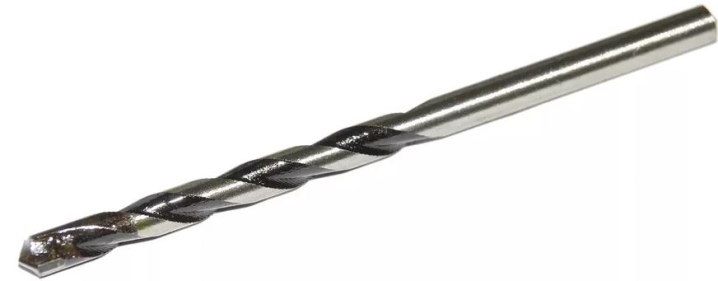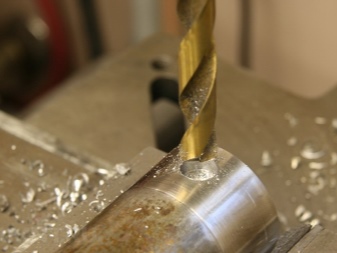Overview of Enkor drills

Drills are a necessary tool for various construction work. There is a wide variety of such elements that allow you to process certain materials, make holes of different depths. Today we will talk about Enkor drills and their main features.

Peculiarities
Drills "Enkor" are special cutting tools that make it possible to make holes of various diameters in materials (wood, metal). Various types of construction drills can be produced with all kinds of shanks (cylindrical, conical) and working parts (spiral, annular, feather, crown). The drills are made from high quality stainless steel. Sometimes additional components are added to such a basis in order to make the product as strong and reliable as possible in the process.


Assortment overview
Currently, the company "Enkor" produces a variety of models of construction drills.


Step models
Such products represent a part with a small cone-shaped tip. Wherein its surface consists of several metal steps of different diameters, but of the same thickness (as a rule, there are only 13 such elements on one drill). The end of the nozzle is pointed. This drill can be used to create depressions of different diameters without repositioning the cutting element. Each step of the tool has a special marking.


The shank of stepped models has small flats, they prevent slipping in the chuck of the apparatus.
Drills for metal
The range of products most often includes drills with a spiral design of the working part. They are manufactured from high speed high performance steel base. Drills for metal from this manufacturer, as a rule, have 2 spiral grooves, designed for timely self-removal of chips, and 2 cutting edges. Most metal models come with a thin cylinder shank.


Forstner drill
Such drills have the appearance of a metal structure, in the central part of which there is a point. A sharpened blade is placed perpendicular to it. It is a zigzag cutter. The Forstner drill is often used for woodworking. In the process of work, the product first strongly cuts into the wooden surface, outlining the direction, then there are circular grooves - they do not allow the nozzle to change its position. Only then does the cutter begin to make a depression in the surface. Their shank type is usually cylindrical.


On concrete
Thin drills designed for processing concrete structures often have a small diameter. Their working area is made in a spiral shape. These varieties are best used for drills that have an impact function. Conventional tools will not be able to work hard concrete. Unlike standard models for wood or metal, these parts have small solders made of carbide materials, they are located on the end stop. These additional elements are needed in order to punch concrete surfaces, while at the same time significantly increasing the life of the cutting part.

All concrete drills are coated with a special victorious hardfacing (it includes cobalt and tungsten). It is applied only to the head of the product.This composition makes the cutting zone more durable and reliable, it becomes resistant to abrasion during the drilling process.
Drills with countersink
Such models are often sold in whole sets. They are used when processing wooden objects. Countersinks are in the form of small attachments, consisting of many small thin blades. Such an element allows, if necessary, to create conical and cylindrical recesses. Countersink drills slightly increase the diameter of the holes already made in the material. At the same time, they significantly improve the surface quality without forming even small irregularities and scratches.

Feathers
These samples are thin milling cutters equipped with two cutting edges and a centering tip. Pen products for drilling, as a rule, are produced with a hex shank, which provides the most reliable fixation in the drill chuck. In the process of work, the chips will need to be removed periodically on their own. These drills are capable of making indentations up to 110 millimeters long. The diameter of the holes can be from 6 to 40 millimeters. These varieties have a significant drawback: they are prone to jamming at high speeds, so work with such a tool should be carried out as carefully as possible and constantly checked.


Selection Tips
There are some important aspects to consider when purchasing the right Enkor drill. Be sure to consider the type of material you plan to process with this tool. After all, they are all subdivided into models for metal, concrete, wood. Special models for glass and ceramics are also produced today. Consider the drill size as well. For more accurate and delicate work, samples with a small diameter are most often selected. If you will be processing hard and durable surfaces with significant thickness, then you should give preference to durable drills with special nozzles and with a large diameter.

Please note the shank type before purchasing. The most popular among users are models with a tapered tip - they provide excellent centering, allow the tool not to jump off during operation, and guarantee maximum drilling accuracy.
Examine the surface of the part carefully in advance. It should be absolutely flat, without chips, scratches or cracks. If the tool has such defects, then the quality of work will be low, and the holes made will turn out to be uneven and sloppy.


For information on how to properly drill with Encor stepped drills, see the next video.













The comment was sent successfully.